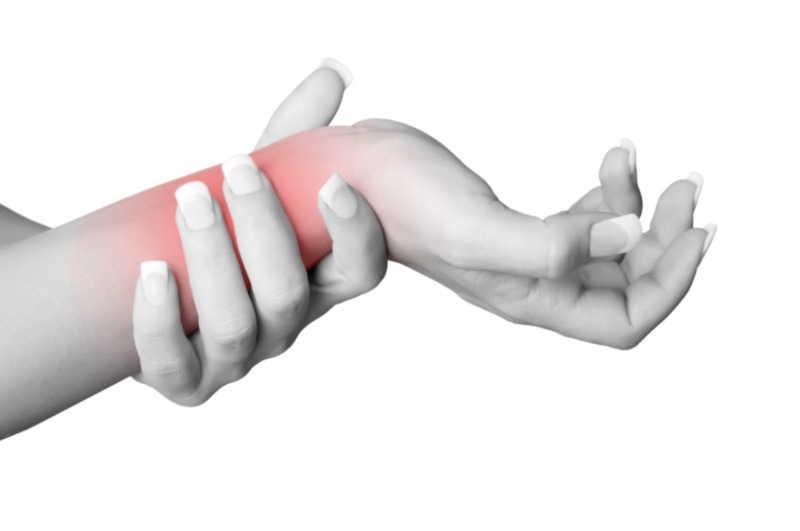10 TIPS FOR PAIN-FREE WRISTS IN YOGA

Yoga is not kind to our wrists. Whether in Downward-Facing Dog, Plank pose or handstand, wrists bear a lot of weight. This weight combined with the immense range of motion we demand often leads to wrist soreness or pain. If you are suffering from a wrist injury you may need to seek treatment from a doctor, but if it’s just a bit of soreness you can easily address wrist pain in your yoga practice with the following 10 tips.
1. Bring the ground to you
In poses like Downward-Facing Dog you can place blocks, wedges, or even a chair under your hands to essentially raise the floor and force your weight out of your wrists. Think of it this way: the higher up you bring your hands, the more your weight will shift to your legs.
2. Use your fists and forearms
One of the reasons your wrists might hurt during yoga is because of the angle at which your wrist is bending. You can modify just about any pose by making fists or coming onto your forearms. You will still get all the benefits of the pose while keeping your wrists safe and pain-free.
3. Bend your knees
In poses like Plank or Downward-Facing Dog, we have a tendency to dump our weight into our hands, especially if we don’t have the core strength to support us. By bending our knees—or even bringing them to the ground—we relieve some of the effort and it becomes easier to shift our weight back.
4. Learn your alignment
Whenever we are practicing arm balances, Plank, Chaturanga, Upward-Facing Dog, or any similar poses, many of us move our shoulders way past our wrists. Instead, think about aligning the outer shoulder with the center of the wrist. This will stack your arm bones and keep you from putting unnecessary pressure on your wrists.
5. Engage hasta bandha
Hasta bandha, also known as the hand lock, is a subtle movement with a big impact. Hasta bandha is when you spread your fingers on the ground and draw upwards through the center of your palm. This movement helps engage your arm muscles, draws the energy up your arms, and relieves some of the pressure on your wrists. It can be more challenging at first, but it can benefit your practice immensely.
6. Warm-up beforehand
We often warm up our spines with cat pose and cow pose at the beginning of class. We might do neck rolls or stretch gently from side to side. These are all ways to prepare the body for the more intense postures throughout the class. We can do the same for our wrists by making a fist and then moving them in circles and stretching them in all directions at the beginning of our practice.
7. Distribute your weight evenly
In Downward-Facing Dog focus on shifting the weight into your heels. In arm balances think about lifting through your core. In any pose where your hands are on the ground, distribute your weight evenly throughout your hands. The more you move your weight away from your wrists, the better you are going to feel.
8. Embrace props and modifications
Props and modifications can be the difference between wrist injuries and wrist freedom. If your wrists are causing you problems, consider dropping a knee in side plank or gripping blocks in handstand. When you use props and modifications you allow yourself to enjoy all the benefits of a pose without experiencing negative and harmful side effects such as wrist pain.
9. Open your shoulders and strengthen your arms
When your shoulders are tight and your arms are weak, you are bound to dump your weight into your shoulders. Practice forward folding with your arms clasped behind your back, Bow pose, or eagle arms to work on opening your shoulders. Combine this with arm strengtheners like Forearm Plank and Dolphin pose. You can also practice squeezing a stress ball to strengthen your wrists so that your body will be ready for whatever poses you want to try.
10. Practice on a firm surface
Anyone who has practiced yoga on the beach knows how much strain a soft surface can put on your wrists. The beach might be beautiful and the carpet might feel good on your knees, but if you are experiencing a lot of wrist pain, consider shifting to a hardwood floor. The solid surface will provide more support for your wrists and make it easier for you to focus on proper alignment.